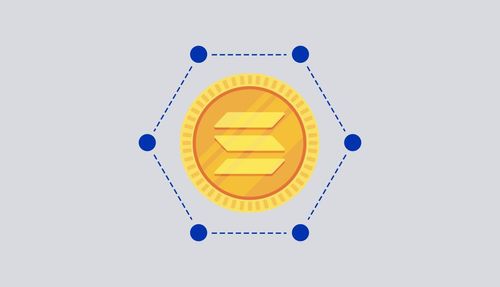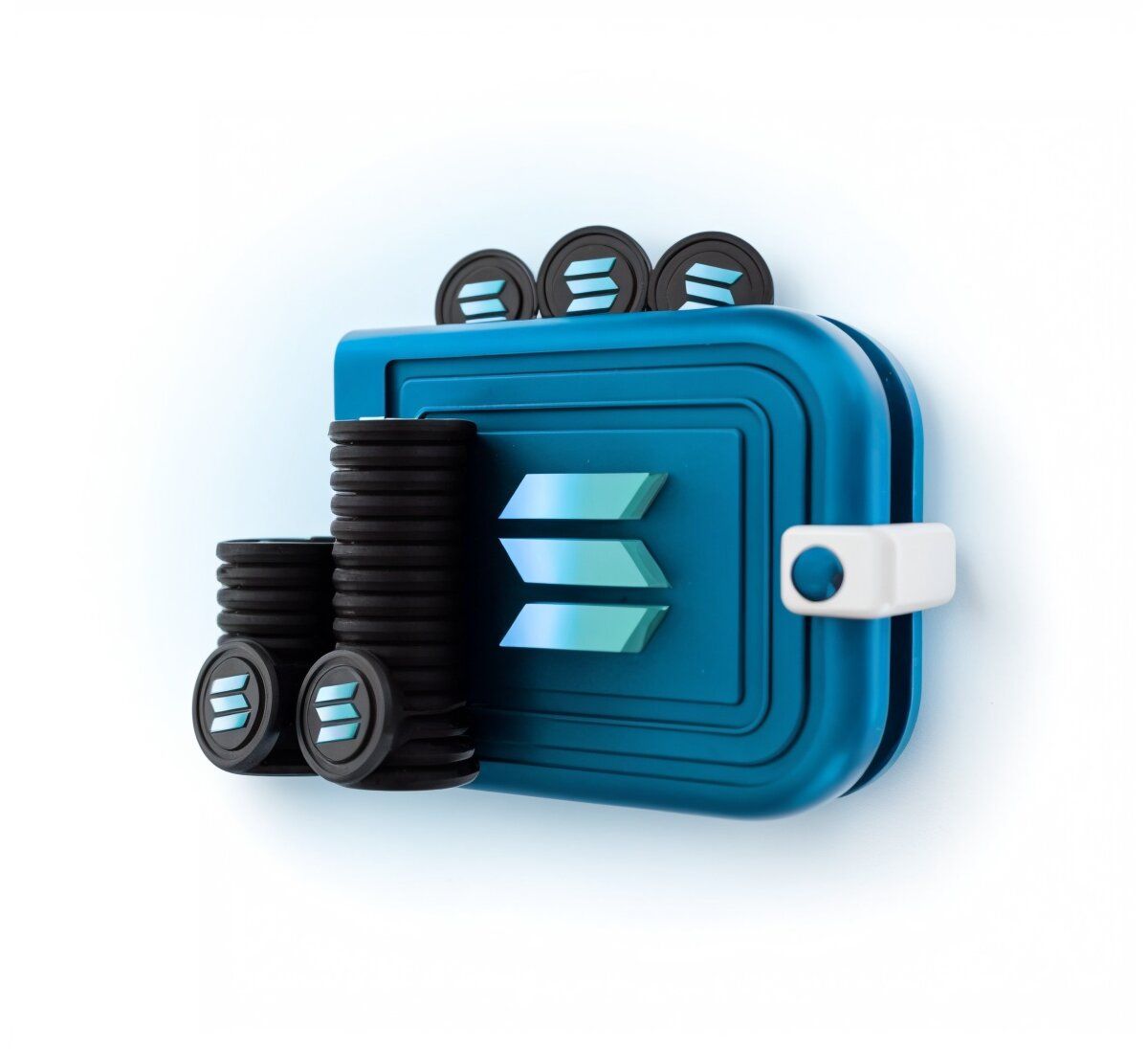What Is Staking Solana – Beginner’s Guide to Earning with SOL
For Beginners

Solana (SOL) is a cryptocurrency of the project of the same name, which can rightfully be considered a direct competitor to Ethereum. This is a comprehensive platform for decentralized finance, which provides uniquely high-speed and low-cost processing of transactions.
The presented crypto project appeared due to the need of users to look for an optimal alternative to Ethereum, which was characterized by network congestion and excessively high gas fees. The essence of the project is to create a blockchain network without sidechains and parachains.
How did Solana appear?
The project was founded in 2017 in one of the US megacities, and about a year later it was put into operation, but only in test mode. The Solana blockchain is considered a third-generation blockchain. This project is also called or considered a public operating system.
Two years later, the Solana Foundation was founded to help develop the Solana project. One of the main tasks was attracting external investors and teams. In the same year, the Solana project began to attract the attention of other companies that created their own blockchains. The first with which Solana created a cross-chain bridge was the Ethereum blockchain.

What are the advantages of Solana?
Taking into account the events that are happening with the project, the price of cryptocurrency continues to grow due to the features of the network. Features and benefits that keep Solana at the top include:
- The maximum theoretical throughput is 50,000 transactions per second, when processing a block takes only 400 msec. Such indicators are not final, as they can increase thanks to network improvements and the use of updated equipment.
- Solana operates on a hybrid protocol, combining PoH (Proof of History) and PoS (Proof of Stake) consensus algorithms.
- Transaction confirmation is not based on mining but on a staking system. The energy efficiency of the project is confirmed by both the creators and independent experts. The transaction requires less energy than 2 Google searches and 24 times less than charging your phone.
In addition, Solana was primarily designed to execute smart contracts, which makes it inherently competitive with Ethereum.
How does Solana work?
Solana was designed from the outset to be a high-performance, secure, and scalable network. It is based on the Proof of Stake (PoS) consensus mechanism combined with Proof of History (PoH). PoS allows you to spend less computing resources . Plus, it provides security and almost completely eliminates the chance of an Attack 51%. Blockchain also uses PoS mechanism to increase throughput and scalability.
PoS is far from new and by itself does not allow you to accelerate the network to such speeds. It's all about the blockchain synchronization algorithm. Solana has what can be loosely called a “decentralized clock”: all network nodes are set to the same time, and they perform work according to a schedule. Each event has a reliable “timestamp”, and they can be arranged in a verifiable sequence. As a result, the network can work to verify many blocks simultaneously without having to verify each one specifically.
Another way to speed things up is the Sealevel smart contract execution environment. In addition, Solana has a multi-level block propagation mechanism called Turbine.
What is the Solana (SOL) used for?
The best technology won't matter if there are no applications based on it. Solana is one of the best, modern, and fastest ecosystems with thousands of projects, including developments in the field of DeFi, NFTs, Web3, and games. Blockchain enables dApp developers to create cost-effective applications. There are over 350 projects on the network, so it would be hard to highlight each project in this article.
What is the future of Solana?
There is an opinion in the financial sector that Solana could well challenge key payment systems such as Visa/Mastercard. This is facilitated by an increase in fees for processing client cards. It can be achieved through the comprehensive payment platform SolanaPay, which can be considered unique in the field of payment processing.
The future of SOL will directly depend on whether the Solana blockchain is adopted as the main one for NFTs, DeFi, and a wide range of decentralized applications. Currently, there are plenty of projects based on the Solana system. In addition, the general trends in the development of the crypto market play an important role.

What Is Staking Solana?
As Solana continues to grow in popularity, more users are interested in ways to benefit from the network beyond trading. One of the most accessible and profitable methods is staking Solana (often referred to as SOL staking). But what is staking Solana exactly? Simply put, it is the process of locking up SOL tokens to support the security and operations of the Solana blockchain in return for earning rewards.
Just like other Proof of Stake (PoS) networks, Solana enables holders of its native token to participate in block validation. Instead of running power-hungry mining equipment, users delegate their SOL to validators—nodes responsible for confirming transactions. In return, both validators and delegators share in the Solana staking rewards.
Is Staking Solana Worth It?
The question of “is staking Solana worth it?” depends on your investment goals. If you're holding SOL long-term, staking is a smart strategy. Not only does it allow you to earn passive income, but it also contributes to the overall decentralization and security of the Solana network.
Unlike simply holding your SOL in a wallet, staking gives your tokens utility. Plus, since the Solana network processes thousands of transactions per second, it remains one of the most actively used blockchains—meaning consistent block production and consistent reward generation for stakers.
Moreover, with SOL's relatively low inflation and a growing number of users participating in the network, Solana staking participation trends have remained robust and are expected to increase further in 2025.
Solana Staking APY and Yield
Staking Solana can offer attractive returns. The Solana staking APY (Annual Percentage Yield) typically ranges between 5% and 8% depending on validator performance, network conditions, and delegation fees. While this may not seem very high compared to speculative DeFi projects, the yield is comparatively stable and comes with significantly lower risk.
Using a Solana staking calculator is a great way to estimate your potential earnings. These tools take into account variables such as the amount of SOL staked, the validator’s commission rate, and current network APY to give you a rough estimate of how much you can earn over time.
For example, staking 1,000 SOL at an average APY of 6.5% would result in approximately 65 SOL earned annually—minus any validator fees.
How to Start Solana Staking
Getting started with Solana staking is relatively easy. Here’s a step-by-step guide to help you get started:
- Purchase SOL: First, buy Solana tokens through a centralized exchange like Binance, Coinbase, or Kraken.
- Transfer to a Compatible Wallet: Use a Solana-compatible wallet like Phantom, Solflare, or Ledger. These wallets allow you to stake directly from your balance.
- Choose a Validator: Research validators based on their commission rates, uptime, and reputation. The best Solana staking experiences come from choosing high-performance validators.
- Delegate Your SOL: Use your wallet’s interface to delegate your tokens. Your SOL remains in your wallet, but it becomes locked (usually with a brief warm-up period).
- Earn Rewards: Once staked, your SOL starts earning rewards. Payouts vary but are often distributed every epoch (approximately every 2–3 days on Solana).
Solana Liquid Staking
An exciting innovation in the world of staking is Solana liquid staking. Traditional staking comes with a drawback: your tokens are locked and inaccessible for the staking duration. Liquid staking platforms like Marinade Finance and Lido offer a workaround.
With liquid staking, you can stake SOL and receive a derivative token (e.g., mSOL or stSOL), which represents your staked SOL plus accumulated rewards. These liquid tokens can be used across DeFi platforms, allowing you to earn additional yield while your original SOL remains staked in the network.
This dual-reward mechanism makes liquid staking an attractive option for those looking to maximize their Solana staking yield without sacrificing flexibility.

Best Solana Staking Practices
To get the most out of staking, it's essential to follow some best practices:
- Diversify validators: Avoid delegating all your SOL to a single validator. Distribute across multiple validators to reduce risk.
- Monitor validator performance: Check regularly if your chosen validator maintains high uptime and low commission rates. Underperforming validators can reduce your rewards.
- Stay informed: Keep up with Solana staking participation trends and updates from the Solana Foundation to adapt your staking strategy.
- Use a reputable wallet: Security is paramount. Use trusted wallets like Phantom or Ledger for added protection.
Following these tips ensures that your SOL investment continues to generate consistent and safe returns over time.
The Future of Staking on Solana
As the Solana ecosystem continues to expand—with new dApps, NFTs, and DeFi protocols emerging—staking will play an even more critical role in maintaining the network. Validators will have increasing responsibilities, and as the user base grows, so will the demand for staking services.
Moreover, new tools and platforms are likely to emerge to make staking more efficient, flexible, and user-friendly. We expect the rise of automated staking strategies, integration with high-yield savings protocols, and AI-driven portfolio management tools.
Solana is also expected to play a significant role in shaping the future of Web3. With its emphasis on speed, low fees, and developer-friendly tools, more builders are choosing Solana as their go-to network. This increased activity will result in higher transaction volumes—and higher staking rewards for participants.
Conclusion
Solana continues to prove itself as a powerful force in the world of blockchain technology, and staking is one of the best ways for SOL holders to participate in this growing ecosystem. Whether you’re a long-term holder or a new investor, staking offers a sustainable method for earning passive income on your digital assets.
With stable APYs, a rapidly growing ecosystem, and support for innovations like liquid staking, the opportunities for generating income with Solana are only set to grow.
Take the time to understand what is staking Solana, choose the best Solana staking options for your needs, and stay informed about network developments. Doing so will allow you to enjoy the benefits of Solana staking rewards while contributing to the network’s decentralization and strength.
In the world of crypto, where opportunities are as dynamic as the technology itself, Solana staking stands out as a reliable and rewarding way to grow your wealth.


